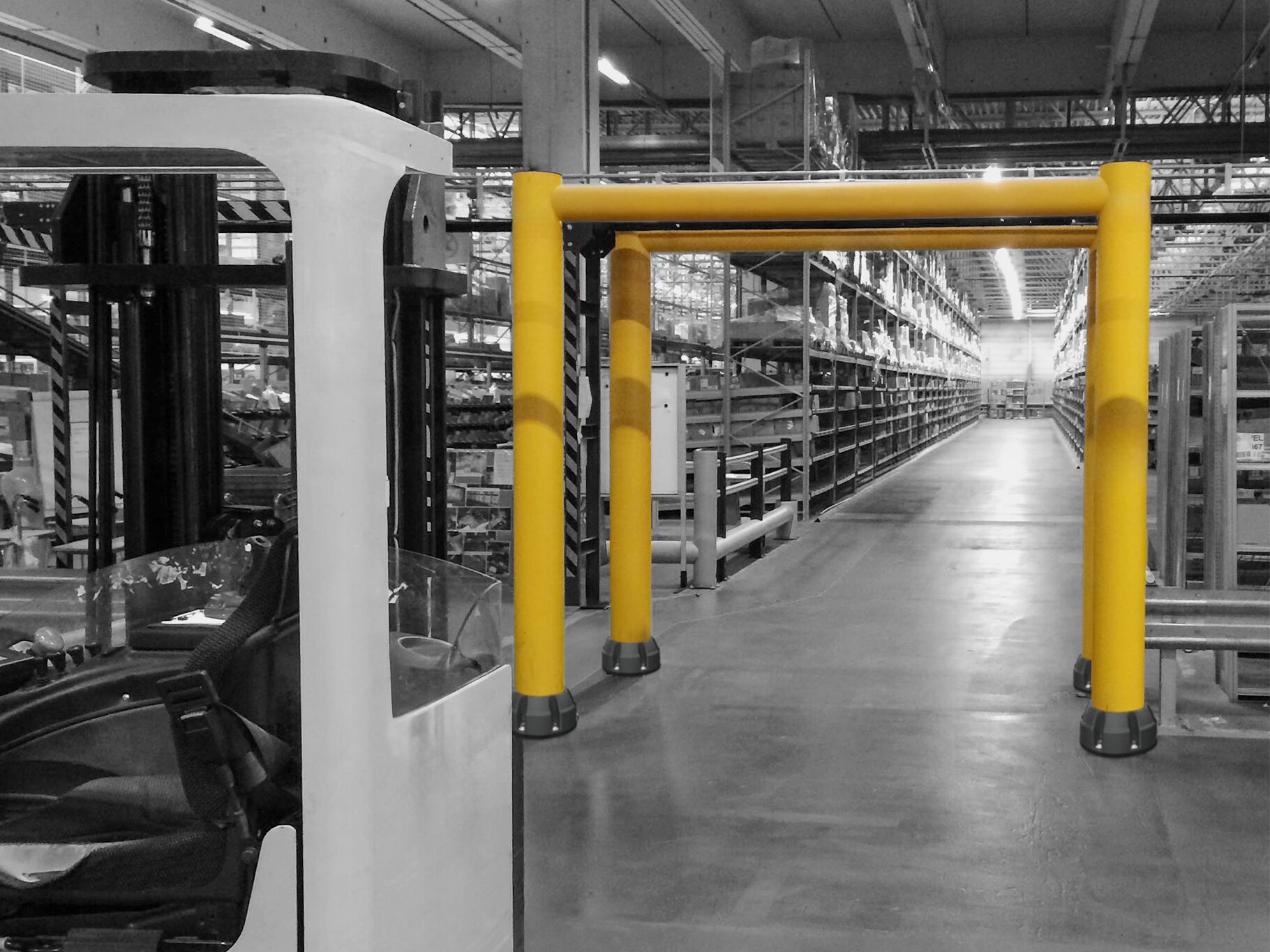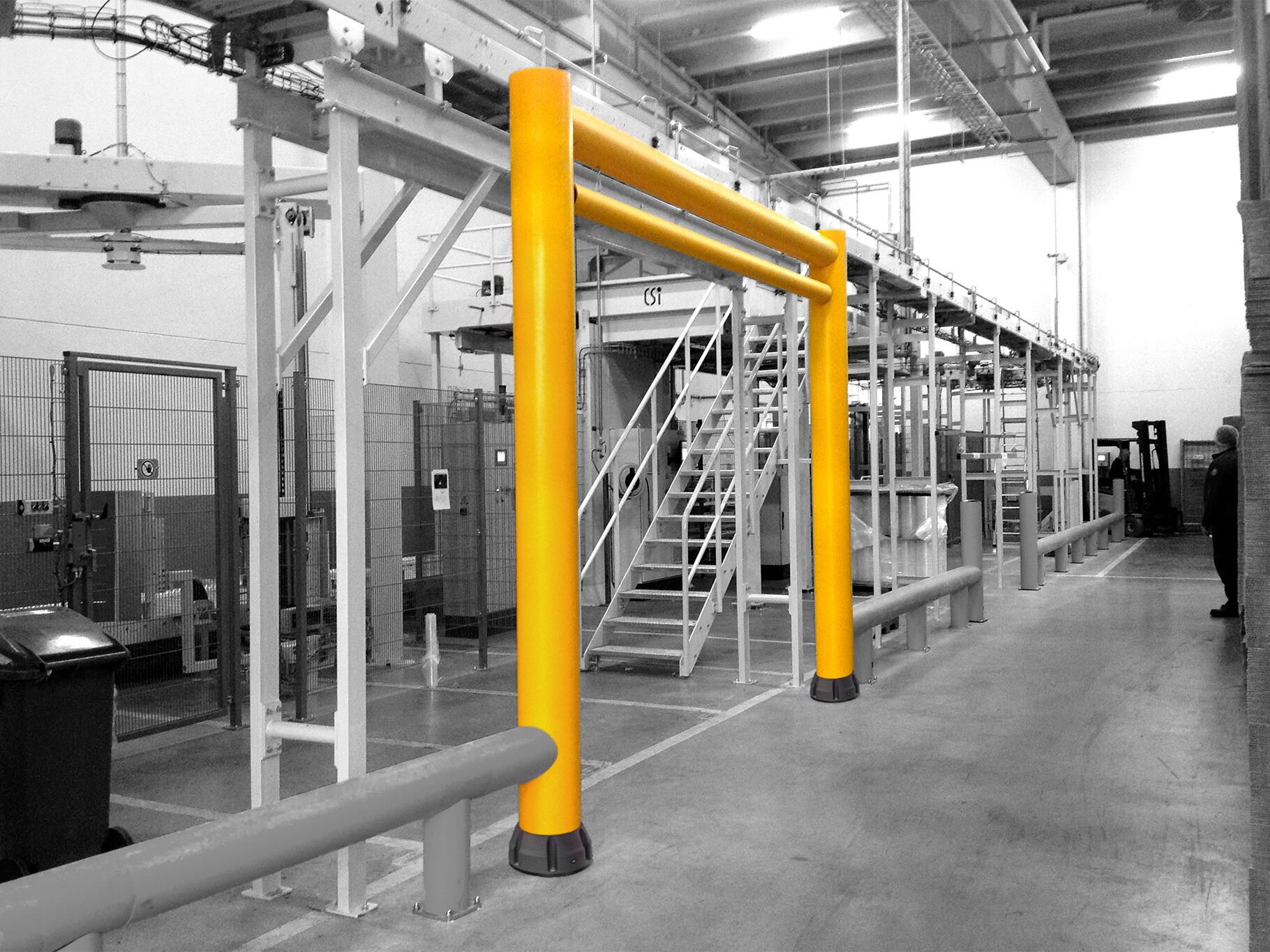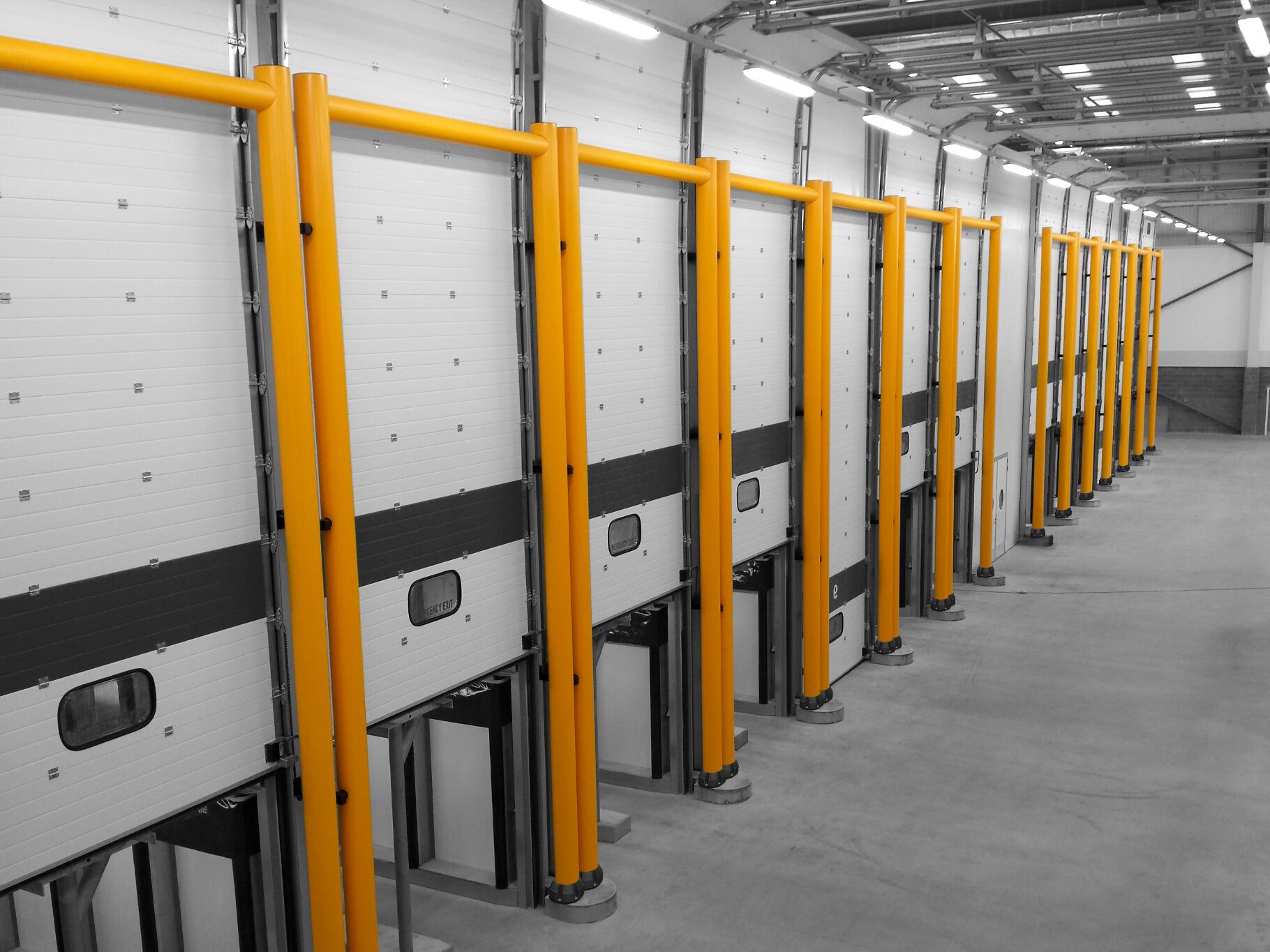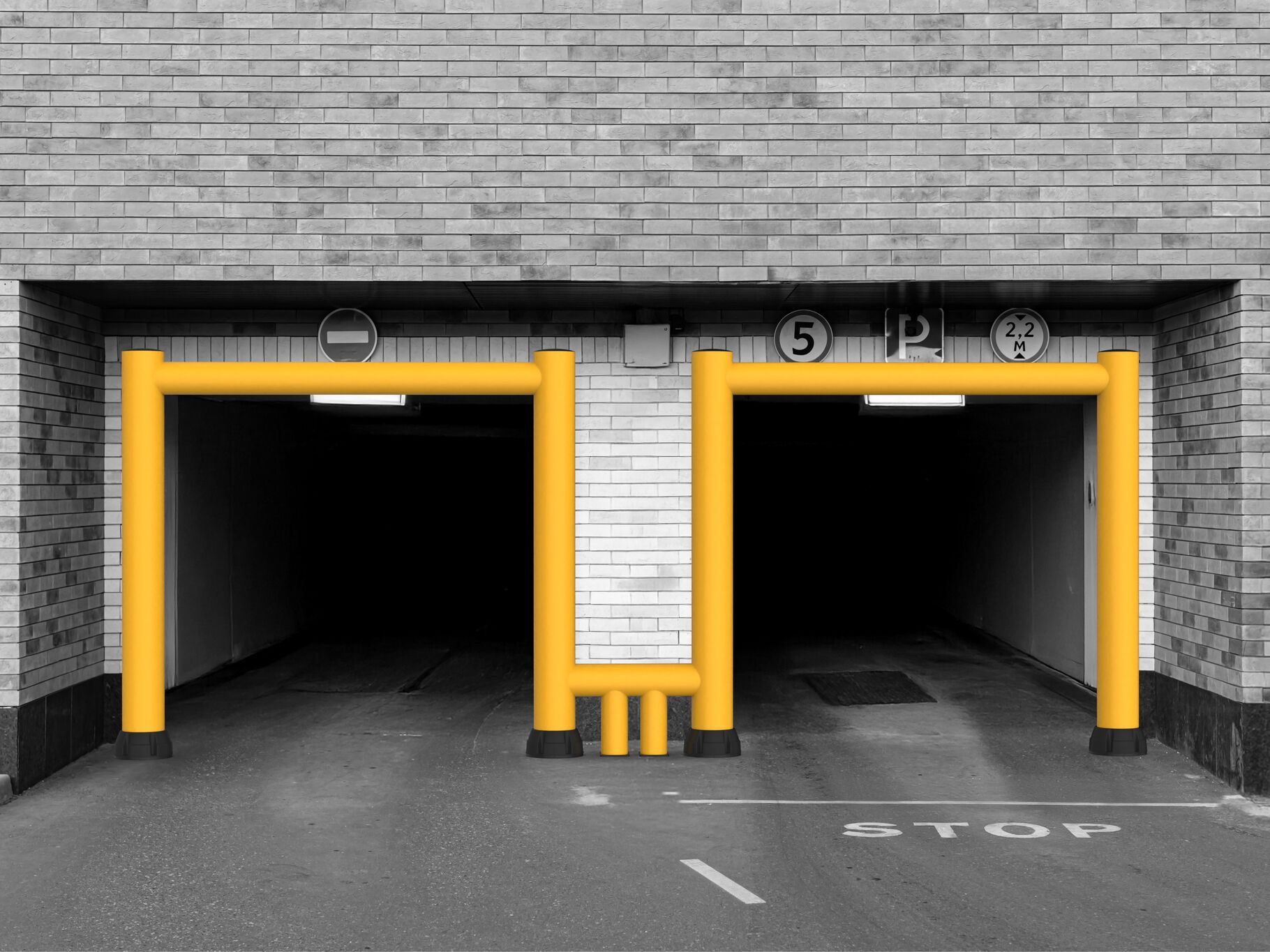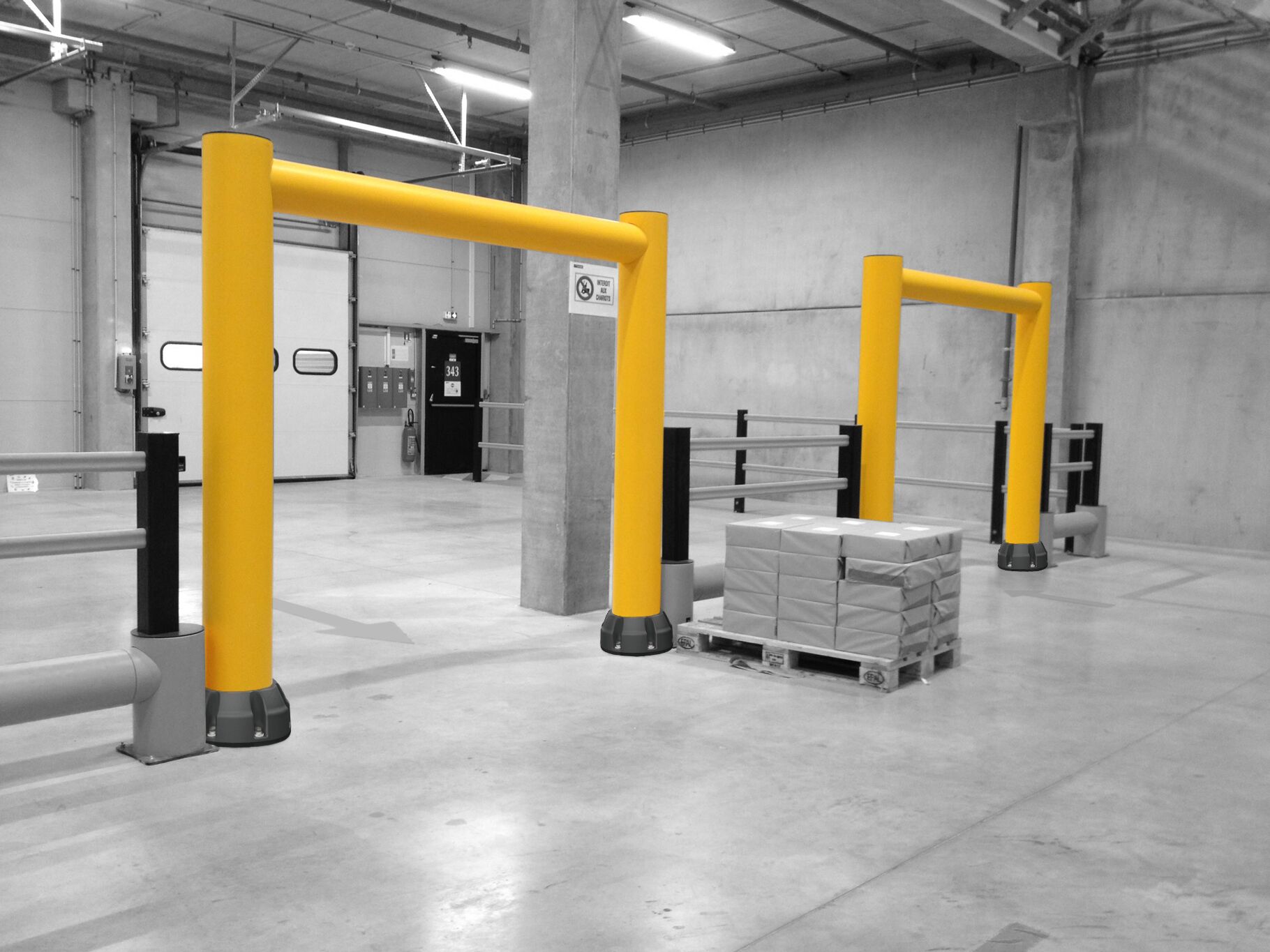10 applications of height restrictors in industrial and logistics environments
In the complex world of industry and logistics, safety is key. With a constant flow of vehicles and valuable installations at risk, collisions and damage are a real concern.
Height restrictors are an effective way to minimise this risk. They ensure that vehicles that are too high do not damage the infrastructure. This includes gates, pipes and other critical installations.
In this article, we explore ten practical applications of height restrictors across industrial and logistics settings. We highlight the versatility and importance of this safety solution.
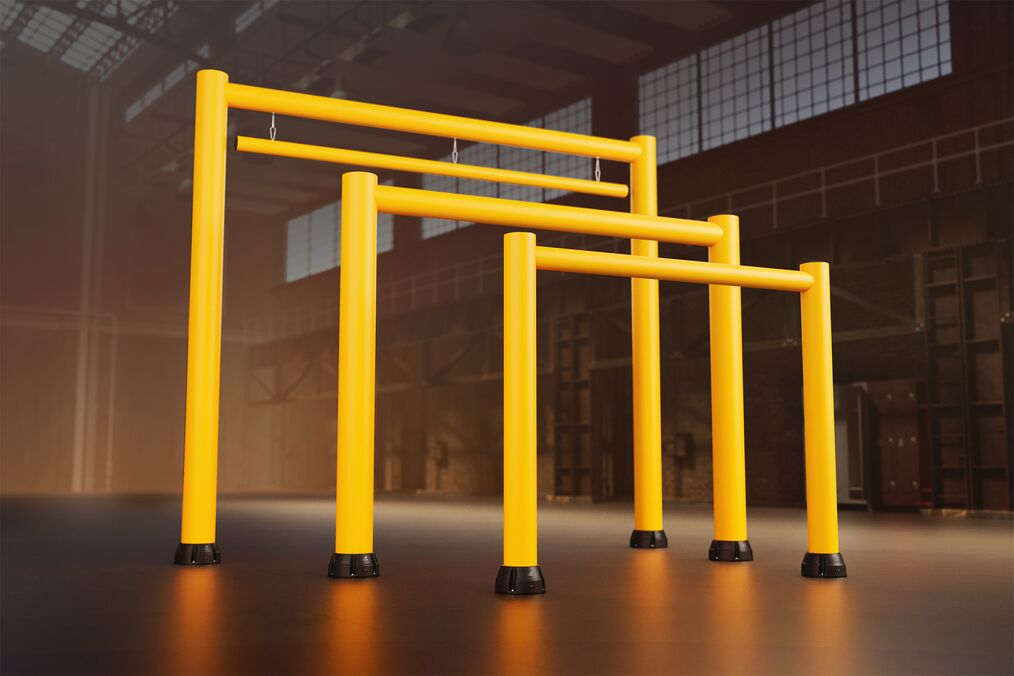

Application 2
Pipes and cable trays
In production halls and logistics environment, pipes and cable trays are often mounted along ceilings and walls. This making them vulnerable to collisions by forklifts or other vehicles with raised loads.
Height restrictors protect this critical infrastructure. They offer protection by preventing forklifts or vehicles with high masts, extended forks or lifted loads from making contact.
This prevents electrical lines, sprinkler systems, compressed air pipes and data cables from damage. The height portal posts also protect wall-mounted gutters and switchboards from side impacts.
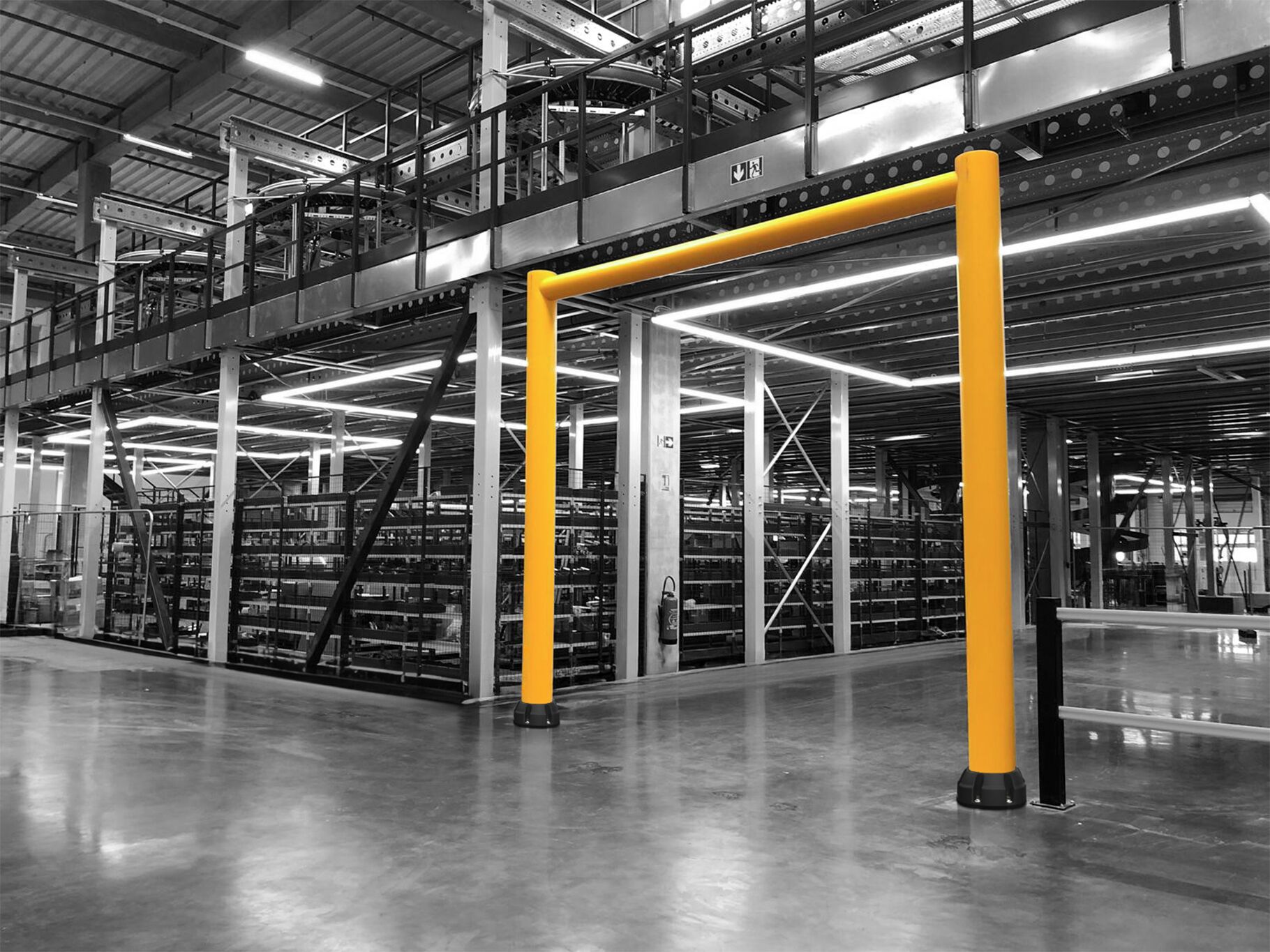
Application 4
Conveyors and sorting systems
Conveyors and sorting systems are essential in warehouses and logistics centres. They automate the movement and sorting of goods. These systems are often installed at height to maximise floor space, making them susceptible to impact. Height restrictors help prevent collisions with these systems by stopping vehicles with raised masts or loads from making contact.
Height restrictors prevent forklifts or other vehicles from accidentally colliding with these systems. The height portal's posts also protect support structures from collisions. This keeps the logistics process safe and efficient.
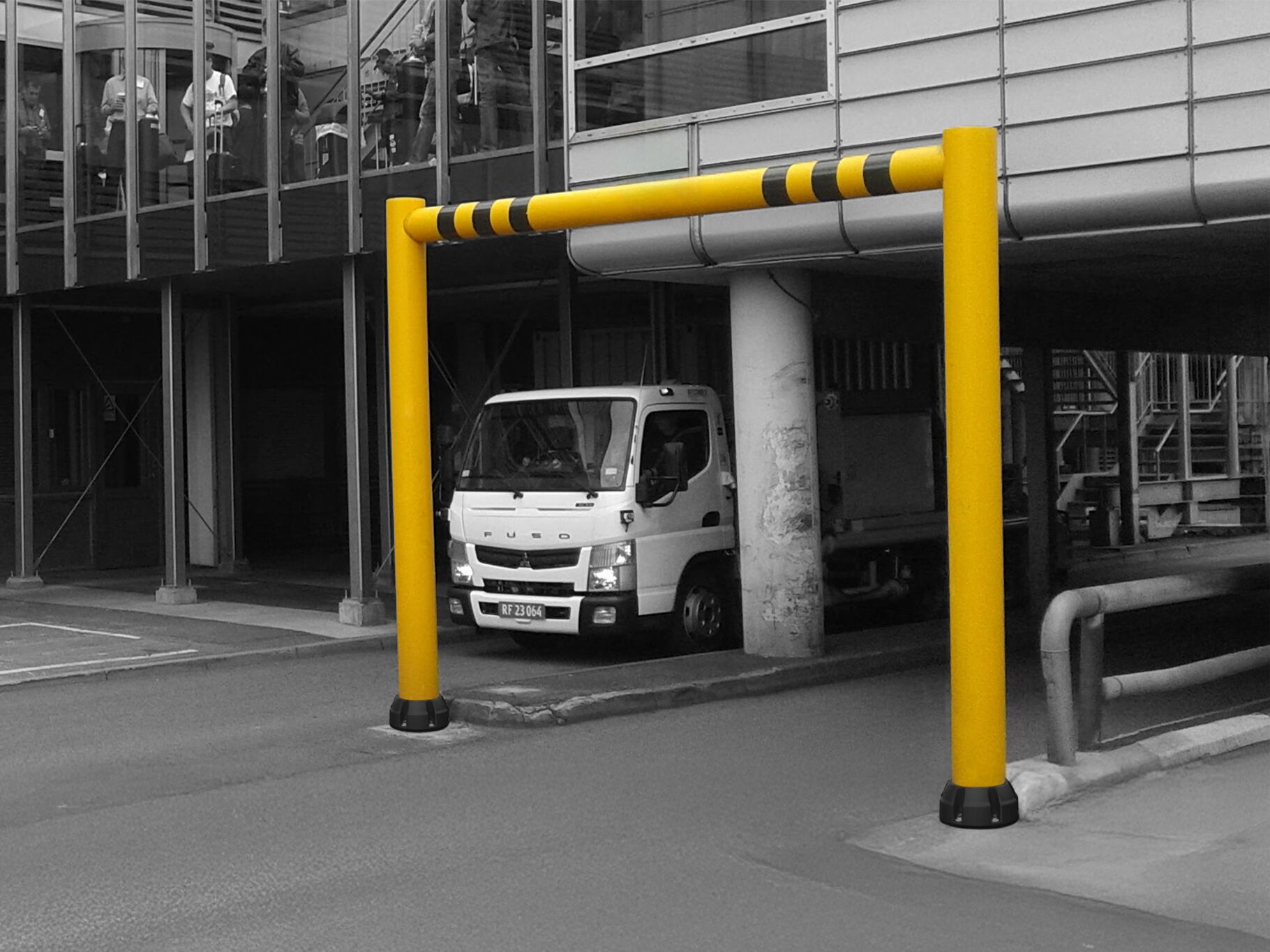
Application 6
Height restrictors on gates and passages
Industrial sites typically include multiple buildings connected by passageways, some of which are gated. Each of these passages has a fixed height. This makes them susceptible to collisions from vehicles with elevated loads.
Height restrictors help prevent accidental damage to gates, overhead doors or connecting structures from vehicles. The height portal supports also provide protection for the side walls, door frames and any technical installations.
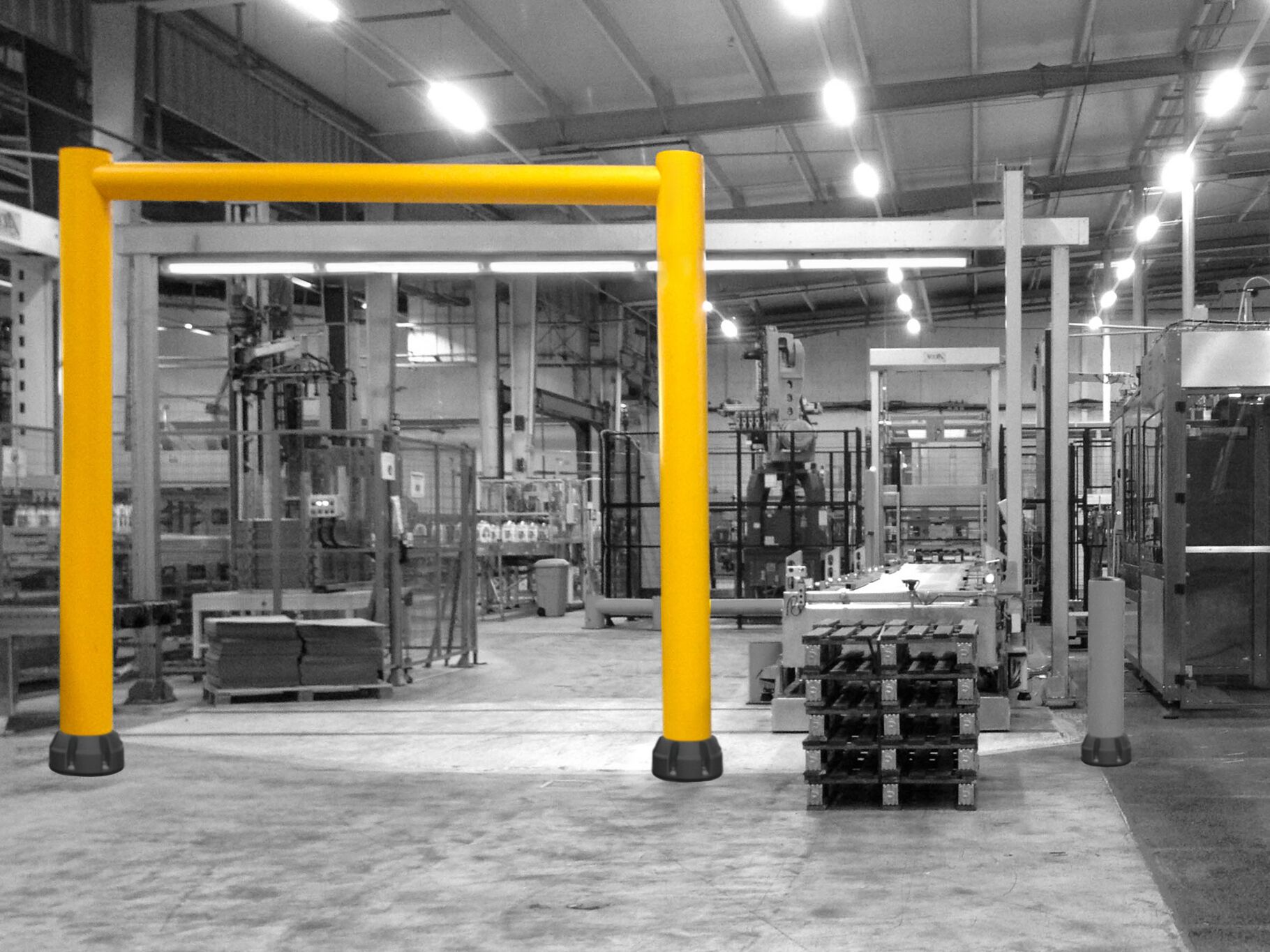
Application 8
Height restrictors in parking garages and low-clearance areas
Underground garages and car parks often have limited clearance heights. The minimum is 2.10 metres. The recommended clearance height is 2.50 metres. Vehicles such as vans, cars with roof boxes or bike racks often exceed these limits. This can lead to collisions. Height restrictors serve as early warnings to drivers whose vehicles exceed the permitted height.
Height restrictors are the ideal solution for this. They warn drivers if their vehicle is too high to drive safely into the garage. A height restrictor is also effective in keeping larger vehicles out of certain car parks. For example, some supermarkets prefer to restrict access for camper vans.

Application 10
Organisation of a work area
In industrial environments, clear organisation of work zones is essential for both safety and efficiency. Height restrictors actively contribute to this. Not only as collision protection tools but also as functional elements of traffic management. Height restrictors serve as clear entry and exit gates, especially when combined with handrails and safety barriers.
By placing one height restrictor at the entrance and another at the exit, you establish a controlled flow for vehicles within a defined height limit. This prevents vehicles from unauthorised access to high-risk zones and helps structure internal traffic safely and clearly. This setup is particularly useful in locations where only specific vehicle types are permitted, such as loading bays, assembly areas or individual workstations.
Conclusion: height restrictors are indispensable in industry and logistics
Installing height restrictors in an industrial environment is more than just a best practice. it’s a crucial step in preventing costly damage and improving workplace safety.
Height restrictors serve as the first line of defence against collision risks. Their wide range of applications highlights their essential role in creating a safe, efficient industrial environment.
Ready to take safety to the next level in your industrial or logistics environment? Discover the potential of height restrictors.
